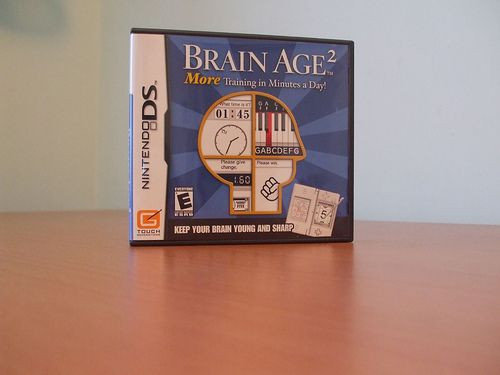Brain Training Improves Performance, But Only For Practiced Task; General Intelligence Boost Unfounded

How can a simple yet challenging set of games — remembering words, sorting objects, etc. — activate your brain in such a way to keep it young? While many rave about the games’ benefits, a new study into the effects of brain training suggests the practice is something of a win-lose, as individual tasks may carry their intended benefit but don’t necessarily do very much else.
Whether sites like Lumosity, Cogmed, and Posit Science actually improve intelligence and not just expand one’s temporary pattern-recognition skills or memory has been contested since many of them arrived in the brain training landscape. For many years, even the term “brain training” equated merely to games of concentration, the use of flash cards for simple addition, and simply reading a book every now and then. Now the industry to improve cognitive skills is massive. But researchers from the University of Oregon argue all the games and exercises may be a lot of hot air, nothing more than a reframing of the many benefits of habit and practice.
To test whether the brain training games merit their acclaim, the team of experimenters divided 60 subjects into two groups. An experimental group played a game testing inhibitory control. They received either a “go” or “stop” signal via left- or right-facing arrows and were asked to press a corresponding key as quickly as possible. A quarter of the time, a beeping sound rang after the “go” signal, acting as a stop. The faster participants could restrain their response to “go,” the better their inhibitory control. Members of the control group played a similar task but did not have to exercise the desired control.
Overall, participants in the experimental group showed greater improvement at the end of the three-week test period than the control group. But the heart of the team’s study came when they measured brain activity via an fMRI (functional magnetic resonance imaging) scanner. Neural activity among the experimental group was greatest in the inferior frontal gyrus and anterior cingulate cortex — two regions of the brain responsible for inhibitory control.
What drew the researchers’ attention, however, was that these regions were the only regions lighting up. Traditional notions of brain training games suggest vast brightness, the total package. As lead author Dr. Elliot Berkman points out, the effects were tiny and localized.
"With training, the brain activity became linked to specific cues that predicted when inhibitory control might be needed," Dr. Berkman, director of the university’s Social and Affective Neuroscience Lab, said in a statement. "This result is important because it explains how brain training improves performance on a given task — and also why the performance boost doesn't generalize beyond that task."
One of the limits of the team’s study is its scope, Berkman concedes. Despite finding their brain training game activated only a small part of the subjects’ brain — an apparent success of their hypothesis — the test involved only one activity for one cognitive skill. Further research may show that other forms of inhibitory control tests produce multiple benefits, say, inhibitory control plus memory, or spatial awareness. Or perhaps it’s the case that inhibitory control tests really do only help that one area, but matching games confer the vast benefits people rave about. In truth, what constitutes “vast benefits” still remains a challenge for science.
“A caveat here is that science does not yet have a compelling answer to the question, ‘What are the relevant properties or aspects of a task that would make it generalizable?’" Berkman explained. “We lack a theoretical model to understand when and where transfer effects do and do not occur.”
A more workable lens to view the current study, he notes, is to treat brain training research in the same way as emerging drug therapies, as researchers tinker with certain aspects each time to understand what affects what. And “once you understand that at a neural level,” Berkman said, “you're much more able to improve it, understand dosage, and make a better guess at who it might or might not work for.”
Source: Berkman E, Kahn L, Merchant J. Training-Induced Changes in Inhibitory Control Network Activity. The Journal of Neuroscience. 2013.



























